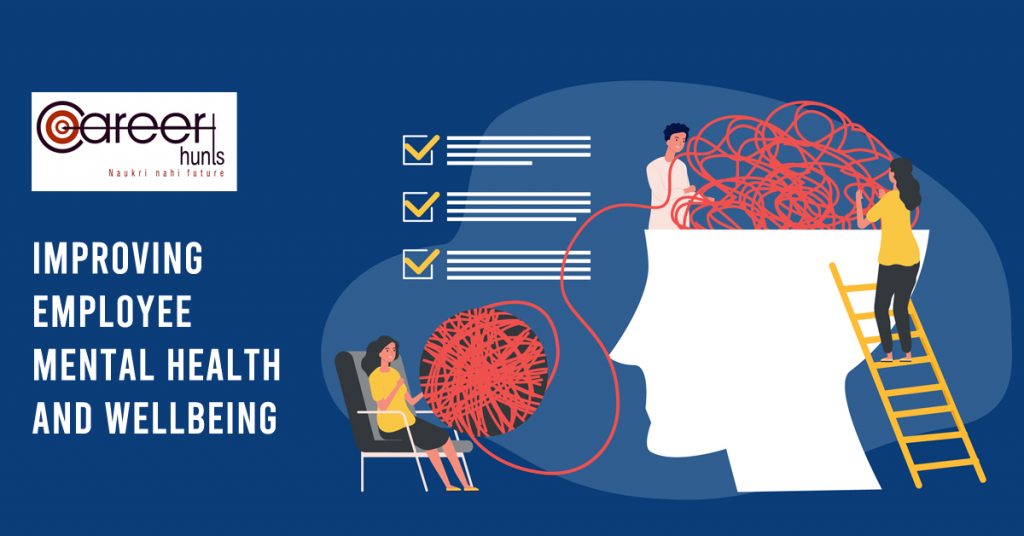Improving Employee Mental Health and Wellbeing
Even by modern standards, the last two years have been exceptionally trying. The World Health Organization reports an increase in the prevalence of both anxiety and depression across the globe. It should come as no surprise that nine out of ten (91%) Gen Z job seekers emphasise the need for open dialogue on mental health in the workplace.
Moreover, 47% of workers in a recent survey by Randstad’s Workmonitor reported feeling more stressed out because of the pandemic and realising they needed to make adjustments in their lives. Forty percent of millennial job seekers would rather be unemployed than unhappy in their current position, and 34% of all job seekers prefer a job with low stress levels.
According to Laura Putnam, CEO and creator of well-being consulting firm Motion Infusion and author of Workplace Wellness that Works, “we might argue that the impact on our mental health is the second act of the epidemic,” and it’s not going away anytime soon. In most cases, the impact won’t be felt immediately.
In light of this, it is more crucial than ever before for businesses to invest in the emotional well-being of their staff. Here’s how businesses may ensure they’re meeting the needs of applicants and workers:
Positivity in motion
Being active has been shown to improve both a person’s physical and mental health. Moving about can help with anxiety and possibly help prevent it.
Putnam claims that “moving is as beneficial as Zoloft in curing depression.” Nevertheless, a different study found that physical activity really makes us more social. So, there is a lot of power in very basic rituals, such as switching a Zoom meeting into a walking meeting.
Start a walking group at work around lunch, or design step challenges to complete every year. Request that all personnel use the stairwells. Awstin Gregg, therapist and CEO of Connections Wellness Group in Texas, says, “When patients move physically and exercise, their bodies release endorphins.” “They are the body’s ‘feel good’ hormones, and they play a direct role in mitigating the negative effects of stress.”
Inspire your staff to network
Employees are more productive and happier when they feel they belong to the team. Having a close friend at work has been shown to increase an individual’s motivation and productivity.
Teams are subject to the same rules. According to Putnam, “high performing, highly engaged teams are 12 times more probable on teams where there is a high level of trust.” “So I frequently advise organisations to look beyond programmes and challenges and think more about how they might build rituals, particularly team by team, lead by the manager, that start to entrench well-being as a way of life,” says author and organisational consultant Dr. David Rock.
Promote adaptability
When people progress up the corporate ladder, they take on more responsibility, but experience less stress, according to a large Harvard research conducted by Robert Putnam. “The reason is that we feel like we have more say over how we spend our time,” the author writes.
Adaptability, then, is an important factor in maintaining good mental health. This jibes with a Monster study that found that 34% of college grads and 28% of non-college grads cited schedule flexibility as the advantage they were most interested in at their prospective jobs.
Putnam argues that allowing workers more control over how and when their jobs are completed is a potent method to reduce stress levels in the workplace.
Build in follow-up measures
When it comes to promoting workplace wellness, leaders should show what they preach. Instead than emphasising that it is ideal for employees to show up every day, it is better to celebrate when people use their PTO. Recognize executives who are taking sabbaticals or vacations and check in with those who aren’t taking advantage of their paid time off.
Promoting healthy practises by rewarding employees for good choices is another option. Follow-through “will require some purposefully shifted viewpoints on the way things have always been done” for a company to turn the corner, according to Gregg. To paraphrase a recent statistic, “mental health problems are now more widespread than the common cold.”
Put up a reflection
An organization’s management may need to examine its own practises closely if its workers are experiencing stress and burnout. Who is at fault, the employer or the worker? Or maybe it’s the nature of the office itself.
When it comes to helping people, “patient overload” is one of the major causes of burnout, according to Putnam. Even before the spread of COVID, many hospitals and clinics had been increasing their patient loads in an effort to boost revenue. Hence, this creates a circumstance in which, just because of workload, these individuals are going to get burned out, regardless of how regularly they practise yoga or mindfulness.
Prompt little acts of self-care
Following on the heels of pandemic anxiety, Monster’s data shows that 83% of workers are concerned that the situation in Ukraine would affect the U.S. economy. Extreme anxiety and concern like this is exhausting.
Recognizing the difficulty of the current situation is one thing that employers may do. And finally, encourage workers to take better care of themselves in general. Eat, move, and sleep, as Putnam advises. A good night’s sleep, as the saying goes, is “the bridge between despair and hope.” Right now, we need to focus on the fundamentals.
According to Putnam, while humans have little to no say over their external conditions, they do have “unlimited power as to how they respond to those circumstances,” despite the fact that they face real risks of extinction.
Take mental health and other workplace discussions seriously.
Younger workers are demanding not only salary transparency, workplace flexibility, and career stability, but also the right to openly discuss mental health and wellbeing on the job.

